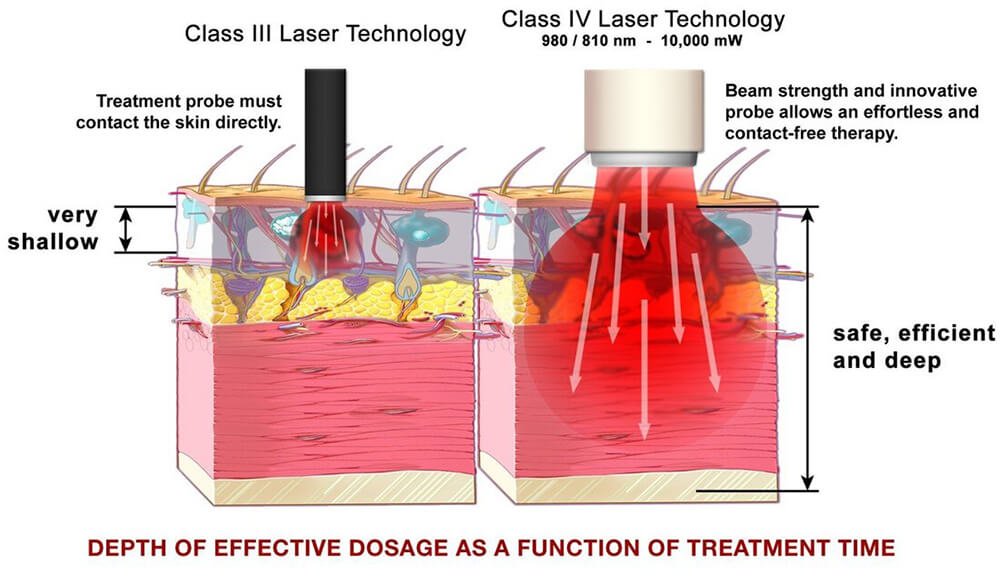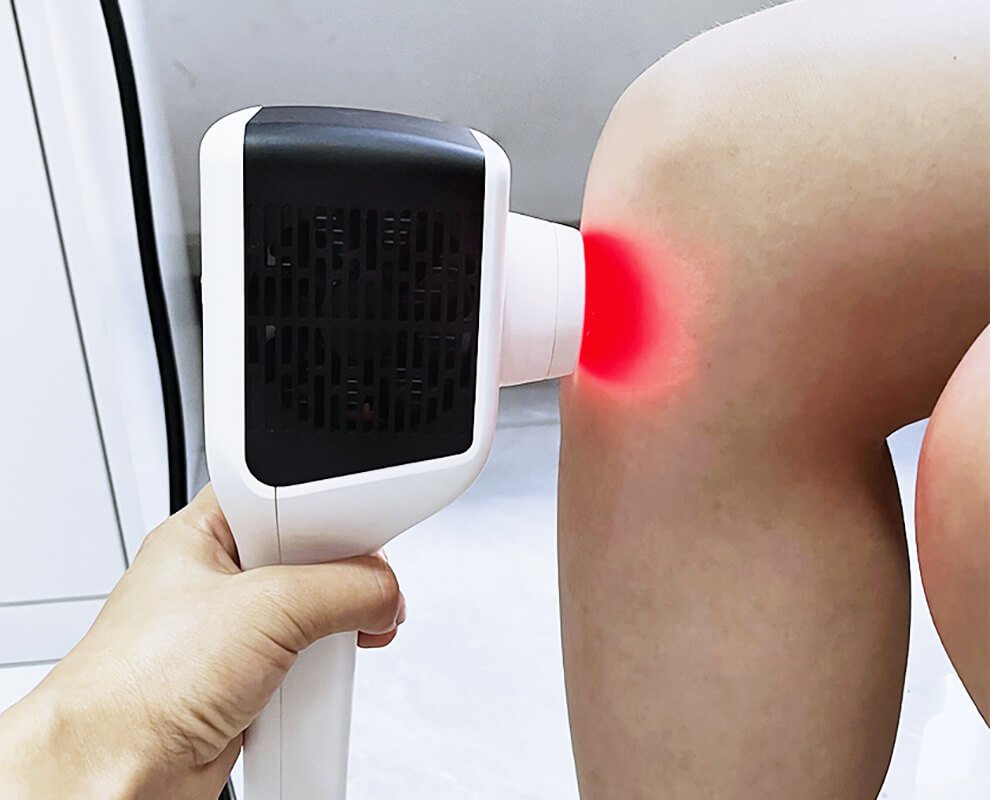Class III Vs Class IV Laser Therapy
There are a lot of different laser therapy systems on the market today, each with varying specifications on their power and settings like continuous wave, pulsed, and super pulsed. With all these options and opposing claims, it’s hard to know what will work best for your clinic.
One of the significant differences between laser therapy systems is whether they are class III (3) or class IV (4) laser devices. Knowing the difference and how each will affect the type of treatment you can provide is essential when deciding on a laser therapy system.
Basics of Laser Classification
The FDA classifies lasers based on their potential to cause harm if misused, particularly to the skin and eyes. Class IIIb and class IV laser devices have the highest potential for injury if misused. Still, even lower classes, such as a class IIIa laser pointer or class II barcode scanner, can cause harm if viewed directly with magnifying optical aids or if the naked eye is exposed for a longer period.
By FDA regulations, any laser device class II or above must be labeled with a warning that includes the device’s class and power output. A laser pointer toy for cats and a surgical laser for skin ablation have the same labeling policies.
Specifically for classes IIIb and IV, laser devices pose a risk of injury if directly viewed for any period of time and are a skin hazard. In addition, class IV lasers can also cause damage if viewed indirectly.
As a healthcare provider, you don’t want to be hurting your patients, so the idea that a device can hurt them might be off-putting. But as with other powerful medical devices like X-rays, CT scans, and MRIs, the benefits greatly outweigh the risks with the proper precautions and training. Any laser therapy device you add to your practice should have comprehensive safety protocols and protective eyewear for both laser technicians and patients.
Difference Between Class IIIb and Class IV Lasers

- Power: The most significant difference is their maximum power output. The FDA defines a class IIIb laser as a device with a power output between 5-500mW (0.005-0.5W) and a class IV laser as a device with a power output above 500mW (0.5W). Class IV includes all lasers that emit power in excess of IIIb limitations. Increased power enables the clinician to treat a larger area in a shorter period of time – ultimately resulting in a therapeutic dose of joules to the target tissue. Eye protection is needed to limit both direct and diffuse reflected exposure. Key switch and safety interlock are also required safety features. The majority of scientific, industrial, military, and medical lasers fall into this category.
- Treatment Strategies: Due to their power difference treatment strategies are different for Class IIIb lasers vs. Class IV therapy lasers. Class IIIb lasers often treat a group of small points and are held in one place for the duration of the point treatment. When treating with a Class IV therapy laser the clinician treats a much larger area, i.e. 300 cm2 for a lower back; the treatment head is moved throughout the duration of the treatment to ensure a therapeutic energy is being delivered evenly to the entire area. Class IV laser therapy can also be administered through a series of contact and non-contact handpiece attachments.
- Dosing Strategies: Class IIIb lasers deliver a smaller dose of joules to a smaller area of tissue. Typically treatments are confined to discrete points. A potential weakness of this technique is the variability of clinical results due to the exact placement of the treatment points. The foundation of Class IV laser therapy is based on the delivery of a therapeutic dose of joules to a large area of target tissue, reducing variability in outcomes. For example on a lower back a Class IV therapy laser would treat at 10 joules/ cm2, in a 10 minute treatment session of 10 watts in continuous wave 6,000 joules of energy would be delivered to the target tissue. It would take a 0.5 watt Class IIIb laser 200 minutes to deliver the same dose.
- Wavelength: Different therapeutic lasers often come equipped with different treatment wavelengths ranging from 700 nm to 980 nm. All wavelengths in this therapeutic window target the same photo-active chromophores. The main difference between wavelengths is the absorption of the light by tissue components such as water and melanin. A device with a adjustable wavelengths allows you to adjust for the individual absorption characteristics of your patient.





Leave a Reply
Want to join the discussion?Feel free to contribute!